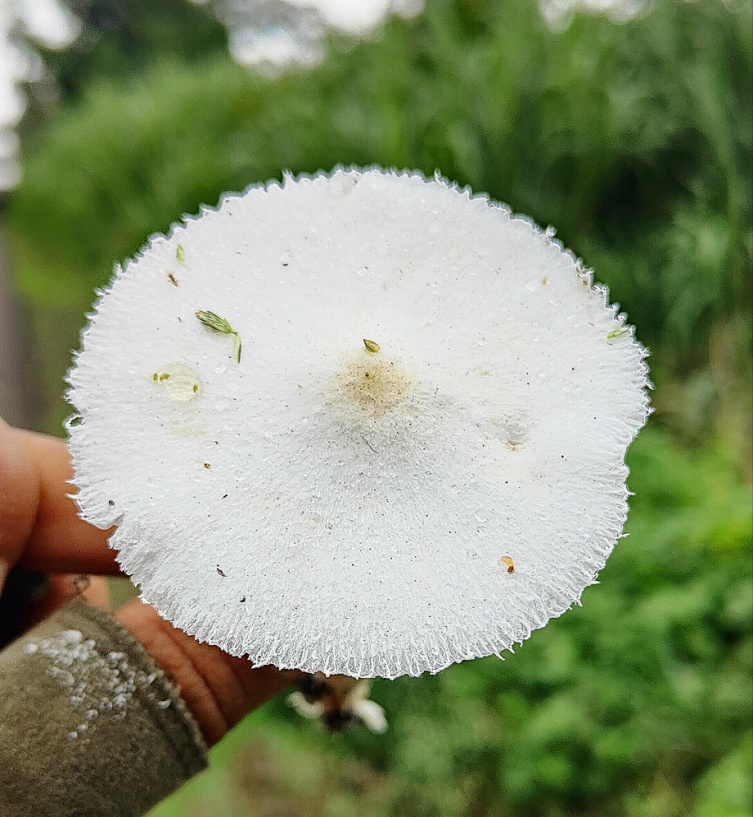Fruiting body small to medium. Pileus 2-4 cm in diam., conical to campanulate; with distinct yellowish brown to pale brown umbo; surface dry, dull, cream to white; scaly, white, appressed and powdery pileal veil that covering the entire pileus surface; margin plicate-striate, entire, not splitting at maturity; taste and odor not distinctive. Lamellae free, equal, crowded, narrow, white; Spore print white. Stipe 3-5 x 0.2-0.3 cm; cylindrical, bulbous at the base, solid, cream white, smooth to pruinose; annulus present, single, thin, attached on the middle part of the stipe. Basidiospores 5.2-7×4.1-5.2μm, ellipsoid to ovoid, thick walled, smooth, germ pores absent, dextrinoid. Basidia 18.2-27×6.6-8.5μm, clavate, 4-spored, thin walled, hyaline; Lamella edges sterile. Cheilocystidia 16.8-36×6.4-13.8μm, cylindrical, clavate to ventricose, thin walled, granular. Pleurocystidia not observed.
Specimens examined
India, Maharashtra, Kolhapur, Kagal, Hamidwada, (16°24ʹ34ʺN-74°17ʹ24ʺE), on soil, gregarious, paired fruiting bodies, 07.07.2020, Bornak, S. I., (Y20V8C2); Karvir, Kothali, Kolhapur-Radhanagari road, (16°35ʹ15ʺN-74°08ʹ32ʺE), on soil, alone, solitary, 16.07.2023, Bornak, S. I. (Y23V6C2).
Remarks:
Leucocoprinus straminellus is characterized by yellowish white to cream pileus having dark yellowish-brown umbo, central annulus and ovoid to ellipsoidal basidiospores that lacks germ pore. It can be confused with L. birnbaumii, however Lc. straminellus has sulphur yellow pileus and thicker stipe in comparison to this species. Previous records of this species are from Kerala and Punjab (Amandeep, et al., 2015). This is a new record from Maharashtra state.
References:
Amandeep, K., Atri, N.S. and Munruchi, K. (2015). A Checklist of Coprophilous Agarics of India. Current Research in Environmental & Applied Mycology, 5(4), 322–348, Doi 10.5943/cream/5/4/3
Amandeep, K., Atri, N.S., Munruchi, K. (2015). Taxonomic study on the coprophilous mushrooms from Punjab, India: new records of family Agaricaceae. Current Research in Environmental & Applied Mycology, 5(1), 27–45, Doi 10.5943/cream/5/1/5





